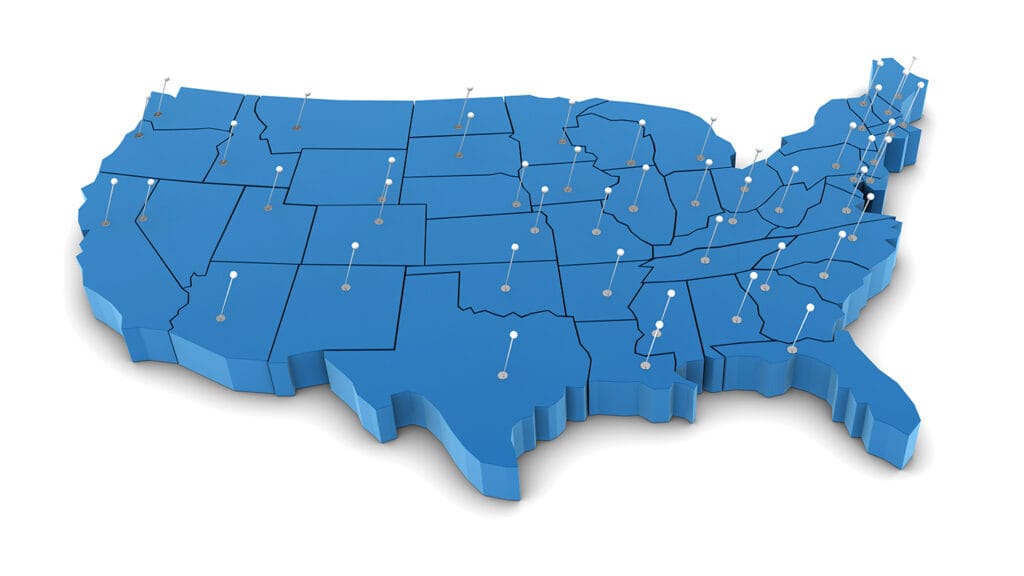A significant discrepancy has formed over the past decade between the number of people needing care and the number of professional caregivers available. This was significantly exacerbated in 2023, with caregivers becoming more exhausted than ever.
Whether due to financial constraints or the struggling economy, almost 1 in 5 Americans who were providing care in 2023 were going unpaid. This equates to over 53 million people providing unpaid care to parents, spouses, friends and disabled children, and this number continues to rise. The Department of Health and Human Services reports that these individuals lose more than $522 billion in annual income, whilst research from AARP predicts a $4.1 trillion loss in GDP by 2050.
In May 2022, it was reported that the size of the care economy in the United States was estimated at $6 trillion, yet it’s forecasted that the U.S. will lose around $290 billion a year in GDP in 2024 and beyond if two major fault lines underpinning the collapsing care economy are not fixed: the lack of available professional caregivers to fill the increasing number of required positions and the departure of employees from the workforce to take on unpaid caregiving duties.
So what is the state of caregiving now that we are in 2024? And are we finally going to recover from the turmoil caused by the COVID-19 pandemic?
Proposed caregiving solutions
At present, many individuals in the U.S. become caregivers due to the lack of long-term caregiving infrastructure. Medicare fails to contribute to long-term care, whilst Medicaid has strict financial boundaries that limit millions of people who, in theory, make too much money to qualify for the program and its subsequent caregiving support.
But what could a solid caregiving infrastructure look like in the U.S.? Some ideas that have been suggested including 12 weeks of paid leave, caregiver tax credits, child affordability measures, expansion of current services to enable people with disabilities and elderly individuals to receive additional help in their homes and communities, and increased wages and benefits for professional caregivers to attract people to the job, reducing the shortages.
At the federal, state and local government levels, proposed initiatives include the expansion of Medicare cover to include home care services, the creation of state-level ombudsman programs to help families needing educational advocacy, and the coordination of government programs for caregivers across federal, state, and local agencies.
The role of the 2024 presidential election
Family First’s CEO Evan Falchuck highlighted that “with so many families facing unsustainable levels of stress and burnout [as a result of caregiving], policymakers have a tremendous opportunity to put in place solutions that will have a real, meaningful impact.”
In 2024, there is a significant event on the U.S. calendar that could play a key role in tackling the caregiving crisis and improving the caregiver infrastructure — the 2024 presidential election, and it is anticipated the caregiving crisis will come up in several U.S. Senate races.
A spokesperson from the advocacy group AARP, for example, highlighted that everybody running for public office is going to be questioned on two issues: their position on Social Security and their position on family caregiving. Independent groups have also encouraged politicians to support unpaid family caregivers and introduce a more permanent solution within the federal government.
Although some milestones were crossed under President Joe Biden’s administration, with the first national strategy supporting family caregivers, there is still a long way to go.
“Policymakers have a tremendous opportunity to put in place solutions that will have a real, meaningful impact.”
Evan Falchuck
Caregiving predictions for 2024 and beyond
Despite the substantial burden that the caregiving crisis has presented, 2024 could be the year improvements are seen across the U.S. and the potholes identified following the COVID-19 pandemic are finally filled in. However, besides the presidential election, there are further opportunities to increase advocacy and improve the caregiving infrastructure beyond 2024.
The upcoming White House Office of Aging Conference in 2025 represents an important opportunity to tackle the caregiver crisis head-on. This once-in-a-decade event serves as a platform for key policymakers, healthcare professionals, caregivers, and advocates to come together and shape national policy and public attitudes towards aging.
The potential outcomes of this conference for unpaid and professional caregivers include:
- Policy development and advocacy
- Recognition and support
- Financial security and benefits
- Health and well-being
- Training and professional development
- Public awareness and education
- Innovation and technology
Final thoughts
The caregiver crisis remains a pressing issue in the United States, with the number of unpaid caregivers reaching an all-time high. By creating public awareness, introducing solutions at the government level, and leveraging events, such as the White House Office of Aging Conference in 2025, we can navigate the crisis and work towards a meaningful solution.
Lance A. Slatton is a senior case manager at Enriched Life Home Care Services in Livonia, MI. He is also host of the podcast All Home Care Matters, a podcast and YouTube channel. The channel earned the YouTube Creator Award for surpassing 100,000 subscribers. By subscribing to the show, you will gain access to a wealth of information and tips that can help you provide the best possible care for your loved one. Find it on Apple podcasts or YouTube at @AllHomeCareMatters.
References



